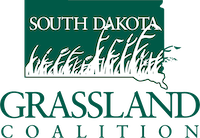Rotational grazing is a sustainable and environmentally friendly practice that has been gaining popularity in recent years. However, despite its numerous benefits, many cattle farmers are still hesitant to adopt this method due to several misconceptions and fears. In this blog post, we will explore some of the common misconceptions surrounding rotational grazing, why people are often afraid to start it, and why they should give it a try anyway.
Misconception 1: Rotational Grazing is Complicated and Time-Consuming
One of the primary reasons people shy away from rotational grazing is the perception that it’s complicated and time-consuming. They believe that managing multiple pastures and moving cattle regularly is a daunting task. While it’s true that rotational grazing requires careful planning and management, the benefits far outweigh the initial effort.
In reality, rotational grazing simplifies cattle management in the long run. It allows you to divide your pasture into smaller sections, reducing the risk of overgrazing and ensuring a consistent supply of fresh forage. Once the system is set up, it can save time and effort on tasks like feeding and weed control. With proper planning and infrastructure, rotational grazing can be a manageable and efficient practice.
Misconception 2: Rotational Grazing Reduces Grazing Time for Cattle
Another common misconception is that rotational grazing limits the time cattle spend grazing. Some producers worry that moving cattle between pastures will restrict their access to food, leading to reduced productivity. However, when done correctly, rotational grazing can actually improve the overall health and productivity of your cattle.
Rotational grazing promotes better forage utilization by preventing overgrazing and allowing pastures to recover between grazing cycles. Cattle are more likely to graze evenly and efficiently when they have access to fresh forage. This can lead to increased weight gain and better overall herd health, ultimately benefiting both the cattle and the producer.
Misconception 3: It Requires Expensive Infrastructure
Many producers hesitate to adopt rotational grazing because they believe it requires significant investments in fencing and water systems. While it’s true that some infrastructure is necessary for effective rotational grazing, it doesn’t have to break the bank.
Start small and prioritize the most critical components, such as sturdy fencing and a reliable water supply. Over time, you can gradually improve your infrastructure as your budget allows. There are also cost-sharing programs and grants available in many areas to help producers implement rotational grazing practices without a massive financial burden.
Misconception 4: Rotational Grazing is Not Suitable for All Land Types
Some producers believe that rotational grazing is only suitable for certain types of land, such as rolling hills or well-drained pastures. This misconception can discourage those with flat or less-than-ideal terrain from giving rotational grazing a try.
In reality, rotational grazing can be adapted to various land types. Even flat or poorly drained areas can benefit from well-planned rotational grazing systems with proper pasture management. The key is to tailor your approach to your specific land and adapt your system as needed to make the most of your resources.
Misconception 5: It's Ineffective in Small-Scale Farming
Another common misconception is that rotational grazing is only effective on large-scale operations with extensive acreage. Small-scale producers often worry that they won’t see significant benefits from implementing rotational grazing on their limited land.
However, rotational grazing can be just as effective on small farms as it is on large ones. In fact, it can be even more beneficial for small-scale producers, as it maximizes the use of available pasture and ensures efficient forage utilization. Smaller herds can rotate through paddocks more quickly, allowing for better rest and regrowth of forage. With careful planning and management, small-scale producers can experience the same positive outcomes as their larger counterparts.
Why You Should Give Rotational Grazing a Try
- Improved Forage Quality and Quantity: Rotational grazing encourages healthier pastures by preventing overgrazing. This leads to better forage quality and increased forage production, ensuring that your cattle have a consistent and nutritious food source.
- Enhanced Soil Health: Properly managed rotational grazing can improve soil health through increased organic matter and reduced soil compaction. Healthy soils lead to better water retention and nutrient cycling, which benefits both the pasture and the environment.
- Reduced Erosion and Environmental Impact: Rotational grazing helps mitigate soil erosion and nutrient runoff by promoting ground cover and reducing the concentration of cattle in one area. This, in turn, contributes to cleaner waterways.
- Healthier Cattle: Cattle raised in rotational grazing systems tend to be healthier and less stressed. Access to fresh forage, reduced exposure to parasites, and improved overall herd health can lead to higher productivity and lower veterinary costs.
- Financial Benefits: While there may be initial costs associated with setting up a rotational grazing system, the long-term benefits can not only outweigh these expenses, but also provide the potential for higher stocking rates. Increased cattle productivity, reduced input costs, and improved pasture health can lead to higher profits in the long run.
Conclusion
Rotational grazing is a valuable practice that offers numerous benefits to producers. While there are common misconceptions and fears associated with it, these can be overcome with proper planning, education, and a willingness to adapt. Small-scale and large-scale producers alike can reap the rewards of improved forage quality, healthier cattle, and holistic practices by giving rotational grazing a try. So, don’t let misconceptions hold you back—take the first step towards a more efficient and lucrative operation today.
